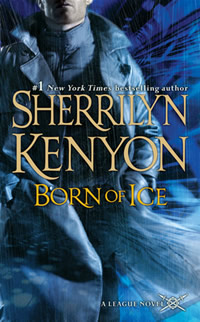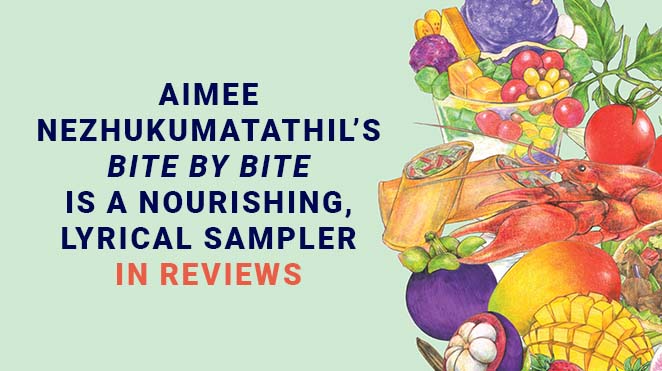Before Americans were hooked on True Blood, before Twilight sank its teeth into millions of readers and moviegoers, Sherrilyn Kenyon was swiftly and quietly building her vampire-lit empire. Kenyon, whom Publisher’s Weekly calls “the reigning queen of the wildly successful paranormal scene,” works almost as hard at nurturing a relationship with her readers as she does at creating the tales they love. Which is saying a lot: Kenyon churns out up to forty pages a day, consistently tops the The New York Times bestseller list, and currently has more than twenty million books in print in over thirty countries. “Kenyon’s writing is brisk, ironic and relentlessly imaginative,” notes The Boston Globe. “These are not your mother’s vampire novels.”
Kenyon’s enormous success can be credited at least in part to her own savvy, DIY marketing skills during the early years. Before the first book in her Dark-Hunter series ever hit shelves, she sparked buzz about it on her website and cultivated a community of dedicated readers who love discussing the books and role-playing as their favorite Dark-Hunter characters. And Dark-Hunter is only one series she’s created: there’s also a League series, a Lords of Avalon series, a Brotherhood of the Sword series, a Nevermore series—the list goes on and on. Today, her devotees, known as Kenyon’s Minions, number over a million, and her website gets more than 100 million hits a year. For the past four years, an annual fan convention celebrating her work, “K-Con,” has sold out within minutes.
 In the irresistibly plotted, witty, and steamy Dark-Hunter novels, Kenyon’s villains—the Daimons—are not vampires in the traditional sense: instead of sucking their victims’ blood, they steal their souls. The latest title in the series, Bad Moon Rising, hit shelves in August, immediately following the release of the first manga version of a Dark-Hunter book. Since then, three more Kenyon titles—all from her “League” series—have appeared. The most recent, Born of Ice, was released on December 1 and went to the top of The New York Times bestseller list a week later.
In the irresistibly plotted, witty, and steamy Dark-Hunter novels, Kenyon’s villains—the Daimons—are not vampires in the traditional sense: instead of sucking their victims’ blood, they steal their souls. The latest title in the series, Bad Moon Rising, hit shelves in August, immediately following the release of the first manga version of a Dark-Hunter book. Since then, three more Kenyon titles—all from her “League” series—have appeared. The most recent, Born of Ice, was released on December 1 and went to the top of The New York Times bestseller list a week later.
Chapter 16: Why vampires? Have they always held a fascination for you?
Kenyon: Yes, vampires have always held a fascination for me, but they’re not the only thing I write. The Dark-Hunter series does have shapeshifters, demons, gods, goddesses, hellchasers, and many other fantastical creatures in them. Of course, my vampires are very different in mythos. The Dark-Hunters themselves aren’t vampires. They’re immortal guardians handpicked by Artemis from ancient warriors. It’s a fantasy series, and the Daimons [the vampirish soul-suckers] are just one tiny part of it.
Chapter 16: The world of the Dark-Hunters has grown very complex. Is it still possible for a reader to jump right in, or does a newbie need to start from the very beginning?
Kenyon: Each book is written so that if you’ve never read the series before you won’t be lost. We pick up new readers with every book, and they always say that they love how they can start in the middle and understand what’s going on.
Chapter 16: There is always a steamy element to a Dark-Hunter story, and a surprising amount of humor, too. How do you figure out the right balance?
“I always say there are two things you never want to ask me about: childbirth and publishing. Because I will scare you off both. Heck, both have really tried to kill me, but only one succeeded. Obviously, I was brought back.”
Kenyon: I just write the books, and somehow it comes out that way. I don’t really analyze the how of my writing.
Chapter 16: You’re a fan of the Hammer Films, campy horror films from the 60s. Do you see any signs of them in the world you’ve created?
Kenyon: Not really, other than the addition of humor to horror. I like to laugh when I’m scared. But there’s no camp in my series. I do occasionally have the characters refer to some of the old movies, but that’s about it.
Chapter 16: But on the more highbrow end of things, the Dark-Hunter world owes a debt to Greek mythology, too, it seems. True?
Kenyon: Absolutely. The ancient Greek and Sumerian myths provide the backbone of the series. This is what happens when you let your eight-year-old read The Theogony. (Thanks, Mom.)
Chapter 16: You were a vampire novelist long before vampires were cool. What sets the Dark-Hunter series apart from other popular bloodsucker tales?
Kenyon: The vampires are called Daimons and they don’t live on blood. They live on souls. More than that, they aren’t immortal. Because of a curse given to their race by the god Apollo, who created them, they die horribly on their twenty-seventh birthday. The only way for them to avoid that horrific death is to start taking human souls. So long as the soul lives inside them, they live, but since human souls aren’t meant to be captive, they begin to die as soon as they’re taken.
Chapter 16: With your books’ sales these days, you’re any writer’s model of the pinnacle of success in a field where it’s outrageously tough to make a living. Were there struggles in your early years?
Kenyon: I always say there are two things you never want to ask me about: childbirth and publishing. Because I will scare you off both. Heck, both have really tried to kill me, but only one succeeded. Obviously, I was brought back.
“On a typical day, I work 20 hours, seven days a week, including holidays. I turn out ten to forty pages a day, depending on the day.”
Yes, there have been a lot of struggles in my career, and it’s been a fight every step of the way. Publishing is not for the meek. My career went south in the early 1990s, and it took me years to rebuild. Because of that, I’m very superstitious; I don’t count how many books I’ve written or that have come out. I never look back, only forward. I focus on one book at a time.
Chapter 16: What’s a typical writing day like for you?
Kenyon: I have three children (all boys), so there is nothing average about any day I live. I was published before I was married or had kids so these two sides of my life have always been merged. It’s just another facet of our life. I write usually late at night once they’re in bed. And I try to write all day long. On a typical day, I work 20 hours, seven days a week, including holidays. I turn out ten to forty pages a day, depending on the day.
Chapter 16: But it’s not all Dark-Hunters, all the time.
Kenyon: I’ve published historicals, historical fantasy, and many other things. In addition to Dark-Hunter series, I write The League science fiction series. I have the BAD Agency series which is suspense; Lords of Avalon which is Arthurian based; Nevermore which is the young adult science fiction series; Chronicles of Nick which is the Dark-Hunter young adult series. There’s also the Brotherhood of the Sword, MacAllisters and Sea Wolves, which are historicals. Not to mention the LOA Marvel comics and the Dark-Hunter manga.
Chapter 16: Is it ever difficult to make the words, the plots, come? Do you have any writing rituals or props you can’t live without?
Kenyon: Nope. If I have a computer or pad in front of me, I can write. I can even multitask and write while I’m talking to someone.
Chapter 16: What advice do you give your fans who aspire to write and publish fiction?
Kenyon: Never give up. Never surrender. It’s a tough industry, but you have to hang in there. Listen to your characters and be true to your muse, and you’ll never go wrong.
Chapter 16: At latest count, you’ve got more than a million addicted and loyal fans known as Kenyon’s Minions, who like to role-play as characters from your books. What is a typical signing/reading like?
 Kenyon: Well, I’m severely dyslexic, so there is never a reading. I can’t do that in public. But as for a typical signing, I always joke that we never know what’s going to happen. We walk in blind for every event. Fans come from all over the world for signings. I’ve had them fly in from as far away as Australia and New Zealand. It’s common to have them come from Europe, Mexico, and Canada. So the one thing that never changes is that I make sure I take a minute to talk to every fan who comes and to say thank you to them for their support. We’ve had fans in labor who’ve come to events or on their way home from the hospital where they’ve had a wreck or surgery and didn’t want to miss it.
Kenyon: Well, I’m severely dyslexic, so there is never a reading. I can’t do that in public. But as for a typical signing, I always joke that we never know what’s going to happen. We walk in blind for every event. Fans come from all over the world for signings. I’ve had them fly in from as far away as Australia and New Zealand. It’s common to have them come from Europe, Mexico, and Canada. So the one thing that never changes is that I make sure I take a minute to talk to every fan who comes and to say thank you to them for their support. We’ve had fans in labor who’ve come to events or on their way home from the hospital where they’ve had a wreck or surgery and didn’t want to miss it.
I describe each event as a family get-together. It’s a party where we celebrate our mutual love and can catch up on what’s going on in our lives and share stories with each other.
Chapter 16: What’s the most extreme fan you’ve come across?
Kenyon: I’m not sure what you mean by extreme, but we have tons who come in costume and thousands who have tattoos. I love the creativity of the fans who make all manner of Dark-Hunter items such as dolls, custom-made BBQ sauce, clothing, jewelry, etc.
Chapter 16: With such a tremendous output of your own, do you find any time to read others’ work for pleasure—or to go to the movies? What are your favorite escapes?
Kenyon: I love a good movie, but usually have to wait for them to come out on DVD.
Chapter 16: Is there anything about Tennessee that’s inspired, informed, or otherwise snuck its way into your stories?
Kenyon: The BAD Agency books are all based out of the Bat Tower in Nashville, which is the home base for the Bureau of American Defense. Who’s going to bomb the home of Country Music?
Tagged: Fiction





